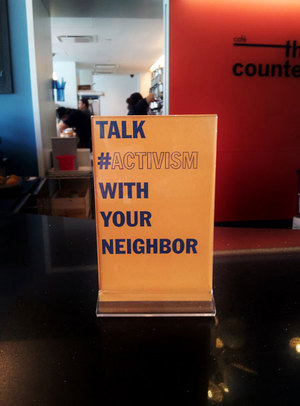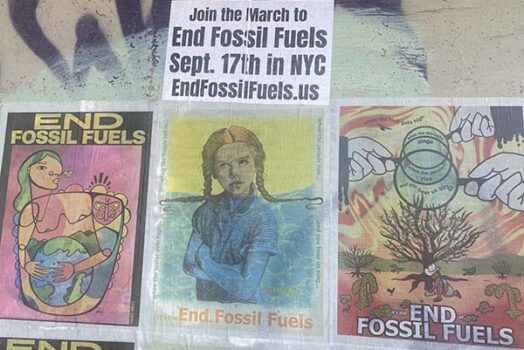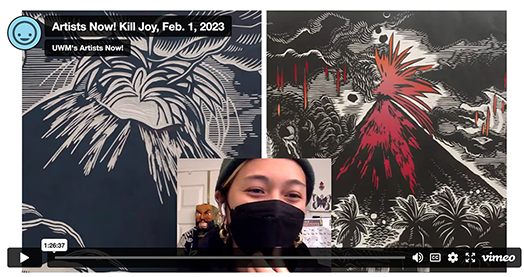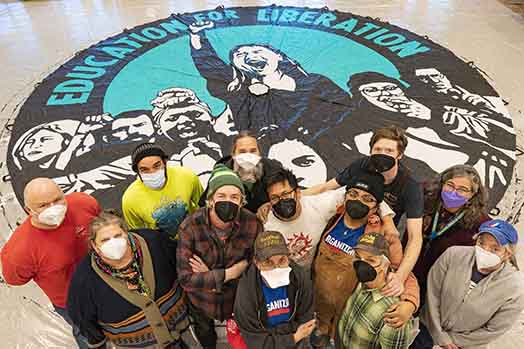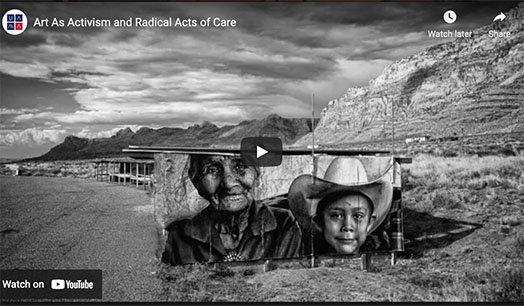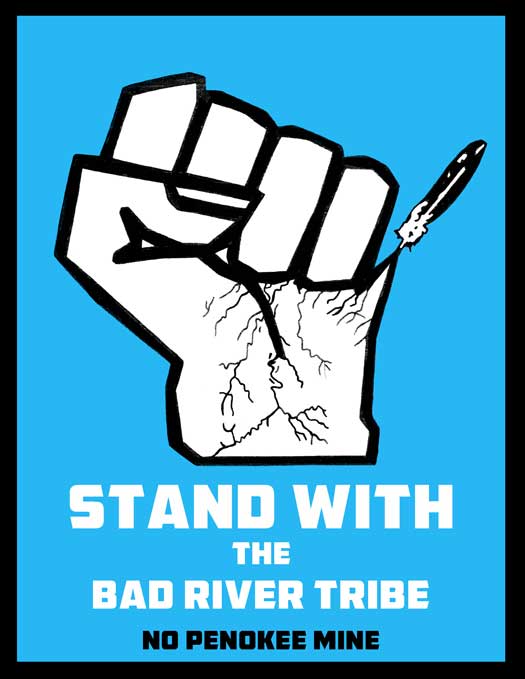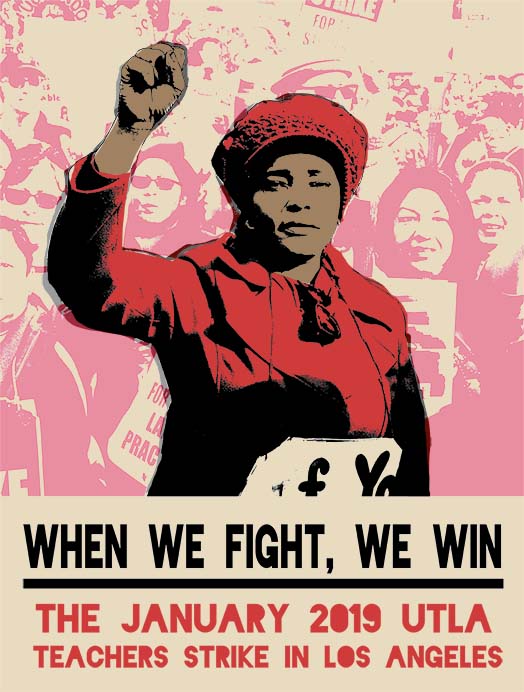Below is an exhibition review from Susan Noyes Platt who has long been at the forefront of writing critically about art and activism. In early 2013 she curated the Justseeds-IVAW “War is Trauma” exhibition at the Seattle Central Community College which was our first collaboration with her. It is our hope with this post that the Justseeds extended community becomes more familiar with her radical art history scholarship and her independent curatorial work in the Pacific Northwest.
Art and Politics at the Brooklyn Museum
By Susan Platt
Wow. The Brooklyn Museum is advocating “Art and Activism!” They have several shows on right now that demonstrate the wide sweep of that idea in terms of aesthetics, media, and issues. I am going to mainly focus on “Witness: Art and Civil Rights in the Sixties.” It is a stunning and thorough rewriting of the history of art for the 1960s. Created by the Museum in honor of the Civil Rights Act of 1964, there are paintings, collage, photographs, sculpture, assemblage, graphics, all referring to the immediate events of the 1960s. There is also a vintage video of Nina Simone singing “Mississippi Goddam” from December 25, 1965 (on Dutch television).
The show has categories, “Integrate Education,” “American Nightmare” “Presenting Evidence” “Politicizing Pop” “Black is Beautiful” “Sisterhood” “Global Liberation” “Beloved Community.” There are over 100 works ranging from famous works by Philip Guston, Romare Beardon, Jacob Lawrence, and Charles White, for example, to obscure pieces never before shown like Jack Whitten’s “Birmingham 1964” and the work of Virginia Jaramillo, who has spent most of her life in Paris after fleeing the Watts riots. Canonical white artists like Robert Indiana, Jim Dine, James Rosenquist, Robert Rauschenberg, and Mark Di Suvero reveal connections to the Movement and donations to auctions in support of CORE.
The real thrill of the exhibition is its coherence. Not a single work misses the mark, as either art or political statement. We see red in Sam Gilliam’s Red April, as blood, a reference to the assassination of Martin Luther King; black and white is more than black and white in this tense time, it is a straightforward metaphor, even when the painting is completely abstract as in the work of Leon Polk-Smith, Norman Lewis, or Charles Alston.
A young Bob Dylan sings behind the SNCC Office in Greenwood, Mississippi in a photograph by Danny Lyon. Lyon emerges as extraordinary in “The Leesburg Stockade, Georgia,” a photograph he took through a window of young girls detained after an act of civil disobedience. The photograph actually came to be used as evidence of abuse and enabled their release. Other photographers also surprise us, Richard Avedon’s arrogant George Wallace, Bruce Davidson’s murder scene, Viola Liuzzo Crime Scene, Selma March, or on the positive side, Gordon Parks Malcom X Holding up a Black Muslim Newspaper, Chicago, 1963, Roy De Carava Two Marchers Talking, Washington DC 1963, Ernest Withers Voter Registration Fayette County, TN, 1960, Moneta Sleet, Jr., Selma Marchers reading during break, Ernest Withers, William Edwin Jones pushes daughter Renee Andrewnetta Jones during protest march on Main Street Memphis TN, August 1961. Photography of the Civil Rights movement is the only art that survived into history, but seeing these images juxtaposed to so many other works, reinforces the theme: artists of all backgrounds and status, were more deeply involved in the Civil Rights movement than anyone has allowed history to record until now.
Frequently these works are grouped in other ways, like the California funk artists, the “Spiral” group, abstract artists who wanted to engage with the Movement, or, of course, Pop Art. Even Frank Stella is included with a black and white work Malcolm’s Bouquet. Needless to say, due to pressures that persist into the present, an artist like Stella still denies political intent. But that just underscores the success of this exhibition in excavating these buried works and providing the contemporary context for them. Teresa a Carbone and Kellie Jones the curators are too be congratulated.
Also on view at the Brooklyn Museum were three other exhibitions which I will just note briefly: AI Weiwei, the hugely political Chinese artist, whose strategies are worth a long look by all artists interested in engaging political issues. Ai Weiwei honors political dissidents, AIDS activists, and the hundreds of children who died in China when their shoddy schools collapsed in an earthquake.
Also on exhibit is a massive single work by Swoon, inspired by and made from the devastation of Sandy. Swoon is an urban guerrilla artist who works in graffiti and installation. The fourth exhibition, the early work of Judy Chicago points to feminist activism in the early 1970s.
But what really is exciting is that the Museum is asking us to think about activism ourselves. There is a small sheet of paper at the end of Witness that we can pick up that says “What does your activism look like?” And on the other side “How is this history reflected in your life?”
The Brooklyn Museum exhibitions, particularly “Witness” which they curated, demonstrates for me a significant shift in priorities. Bringing together these crucial images tells us that art history, as it is currently written, is still permeated by the ideology of apolitical modernism. The fact that so many artists engage social issues, but then deny their political engagement or we never see their work tells us that the hegemonic power of capitalism and its partner aesthetics is a ferocious force. The Brooklyn Museum’s celebration of art and activism is hopefully the beginning of a major push back by courageous curators, critics and art historians willing to embrace the power of artists to contribute to and even shape the way we understand urgent social and political concerns.
To see some of the images from the Witness exhibition, click here.; the Ai Weiwei exhibit, here; the Swoon installation, here; and the Judy Chicago exhibit, here.
Susan Noyes Platt, Ph.D., currently based in Seattle Washington, has written extensively on art and politics as both a critic and an art historian, including two books, Art and Politics in the 1930s, and Art and Politics Now, Cultural Activism in a Time of Crisis, (1999 – 2009) both published by Midmarch Arts Press. She writes a monthly newspaper column and contributes to a wide range of online and print publications. See www.artandpoliticsnow.com for more information.
